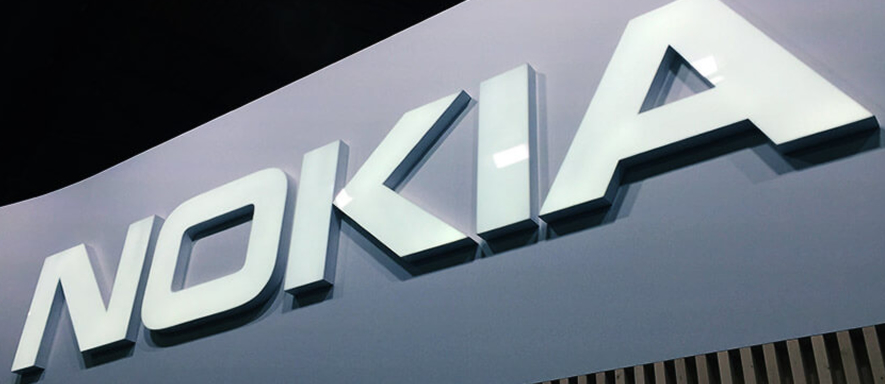Nokia released its Q3 financial results for 2017 showing net sales of €5.5 billion for the quarter compared to €6 billion for the same period last year. The company reported a 7 percent year-on-year sales decrease in Q3. Nokia CEO Rajeev Suri said the company’s patent licensing business was the “clear highlight” of the quarter.
“We reached a favorable arbitration outcome with LG and have since reached an agreement with them on a license for a longer term than what was set out in the arbitration,” Suri said. “With this fast and effective execution against our patent licensing strategy, we have approximately doubled our recurring licensing revenue from €578 million in 2014.”
Suri said he was pleased that in 2017, the growth in patent licensing helped to offset the sales decline on the Networks side. “We have excellent momentum and considerable opportunity to further develop the business in 2018 and beyond,” he said.
The company saw strength in parts of its Networks business in Q3. On the sales side, Nokia saw constant currency year-on-year growth in Global Services and IP Routing as well as in its Middle East and Africa, and Asia-Pacific regions. Orders were up in many areas, according to Suri, including Applications & Analytics, which logged its fifth consecutive quarter of order growth in Q3, showing the progress being made to build a strong, stand-alone software business.
On the profitability side, the overall Networks gross margin of 38.6 percent was up compared to one year ago, a “remarkable achievement” Suri said, in the “context of a market that remains challenging”. In addition, Global Services and IP Networks and Applications delivered improvements for Nokia in operating margin compared to Q3 2016, at 8.1 percent and 10.7 percent, respectively.
Suri said the company continued to build momentum in its strategy to expand customer base beyond communication service providers. Across the adjacent segments that Nokia’s targeting, year-to-date orders were up by double-digit percentages and sales were up by 8 percent, excluding the former Alcatel-Lucent third-party integration business that the company is currently winding down.
“We also added more than 60 new customers in these adjacent segments so far this year, including China Pacific Insurance Company, the first large enterprise win for our Nuage business in China,” Suri said. “With cable operators, we won the first customer - WOW! in the United States - for our new products coming from the acquisition of Gainspeed, which we are also trialing with almost a dozen customers, including some of the industry's largest players.”
These results, he said, “reflect the power of our disciplined operating model and the advantages of our end-to-end portfolio.” In a market where competition remains robust, operational discipline is a must, he added, and it is a “core strength of Nokia.”
Furthermore, as the market transitions to 5G, Suri said he believes that the benefits of Nokia’s portfolio will become even more apparent given that 5G is about much more than Radio. It requires Cloud core, IP routing, transport of many kinds, fixed wireless access, Software-Defined Networking and more - and Nokia is one of the few companies that are able to meet all those needs.
Nokia experienced some challenges in its Mobile Networks business and saw a continued decline in its primary addressable market in 2018. That decline, which the company estimates to be in the range of 2 percent to 5 percent, is the result of the multiple technology transitions underway; robust competition in China; and near-term headwinds from potential operator consolidation in a handful of countries.
“In terms of the issues we are facing in Mobile Networks, I have noted in previous quarters that the R&D team in this business group has faced an extraordinarily high workload,” Suri said. “Given this situation, we have seen some issues with the time taken to merge some products that have, unfortunately, impacted a small number of customers. As a result, Mobile Networks has experienced both revenue pressure and an increase in expected network equipment swap costs.”
He said the company is “committed to getting these things back on track and we are already seeing meaningful improvements”. Field deployments of Nokia’s new AirScale products were ramping up in all the company’s geographies, including with key North American customers. These products help improve operator competitiveness, Suri said, not just by addressing cost challenges, but also by setting a new standard for performance and flexibility.
Suri also noted that despite some additional investment required in Mobile Networks to maintain product leadership, Nokia is committed to its €1.2 billion cost savings plan in full-year 2018. These savings come at a slightly higher cost than previously expected, and Nokia will continue to assess opportunities to deliver further savings in the area of cost-of-goods sold.
“Regarding our cash position, I am not satisfied with our performance in the third quarter and we are redoubling our efforts in this area. Maintaining our strong balance sheet is a clear priority,” said Suri. “In short, Q3 was a period in which we faced some challenges, but delivered good performance in many areas as well as momentum in the execution of our strategy.”





